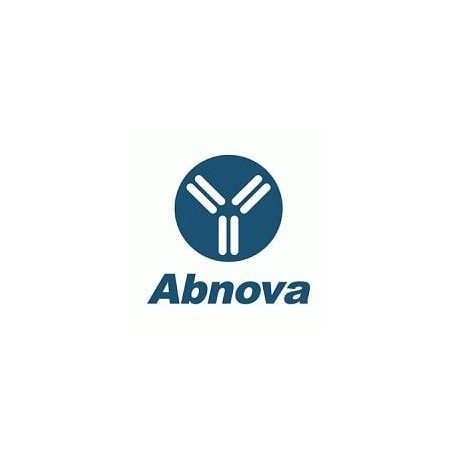Cart 0 Product Products (empty)
No products
To be determined Shipping
0,00 € Total
Prices are tax excluded
Product successfully added to your shopping cart
Quantity
Total
There are 0 items in your cart. There is 1 item in your cart.
Total products (tax excl.)
Total shipping (tax excl.) To be determined
Total (tax excl.)
Data sheet of CSF1R (phospho Y723) polyclonal antibody
| Brand | Abnova |
| Product type | Primary antibodies |
| Reactivity | Human,Mouse |
| Host species | Rabbit |
| Applications | IP,ELISA,IHC,WB-Ce |
More info about CSF1R (phospho Y723) polyclonal antibody
| Brand: | Abnova |
| Reference: | PAB12618 |
| Product name: | CSF1R (phospho Y723) polyclonal antibody |
| Product description: | Rabbit polyclonal antibody raised against synthetic phosphopeptide of CSF1R. |
| Gene id: | 1436 |
| Gene name: | CSF1R |
| Gene alias: | C-FMS|CD115|CSFR|FIM2|FMS |
| Gene description: | colony stimulating factor 1 receptor |
| Immunogen: | Synthetic phosphopeptide corresponding to residues surrounding Y723 of human CSF1R. |
| Immunogen sequence/protein sequence: | DTYVEM |
| Form: | Liquid |
| Recommend dilutions: | Western Blot (0.1-1 ug/mL) ELISA (0.01-0.1 ug/mL) Immunoprecipitation (2-5 ug/mL) Immunohistochemistry (2-5 ug/mL) The optimal working dilution should be determined by the end user. |
| Storage buffer: | In TBS, pH 7.2 (BSA, 10% Proclin300) |
| Storage instruction: | Store at 4°C for three month. For long term storage store at -20°C to -80°C. Aliquot to avoid repeated freezing and thawing. |
| Quality control testing: | Antibody Reactive Against Synthetic Peptide. |
| Product type: | Primary antibodies |
| Host species: | Rabbit |
| Antigen species / target species: | Human |
| Specificity: | This antibody recognizes ~150 KDa of human CSF1R at a phosphorylation site of Tyrosine 723. It does not recognize non-phosphorylated peptides. |
| Reactivity: | Human,Mouse |
| Application image: |  |
| Application image note: | The whole cell lysate derived from m-CSF stimulated LNCaP was immunoblotted by CSF1R (phospho Y723) polyclonal antibody (Cat # PAB12618) at 1 : 500. A major immune-reactive band is observed around ~ 150 KDa (Lane 1). This band is blocked by pre-incubation of immunizing peptide (Lane 2). |
| Applications: | IP,ELISA,IHC,WB-Ce |
| Shipping condition: | Dry Ice |
| Publications: | The activated macrophage colony-stimulating factor (CSF-1) receptor as a predictor of poor outcome in advanced epithelial ovarian carcinoma.Toy EP, Chambers JT, Kacinski BM, Flick MB, Chambers SK. Gynecol Oncol. 2001 Feb;80(2):194-200. |


